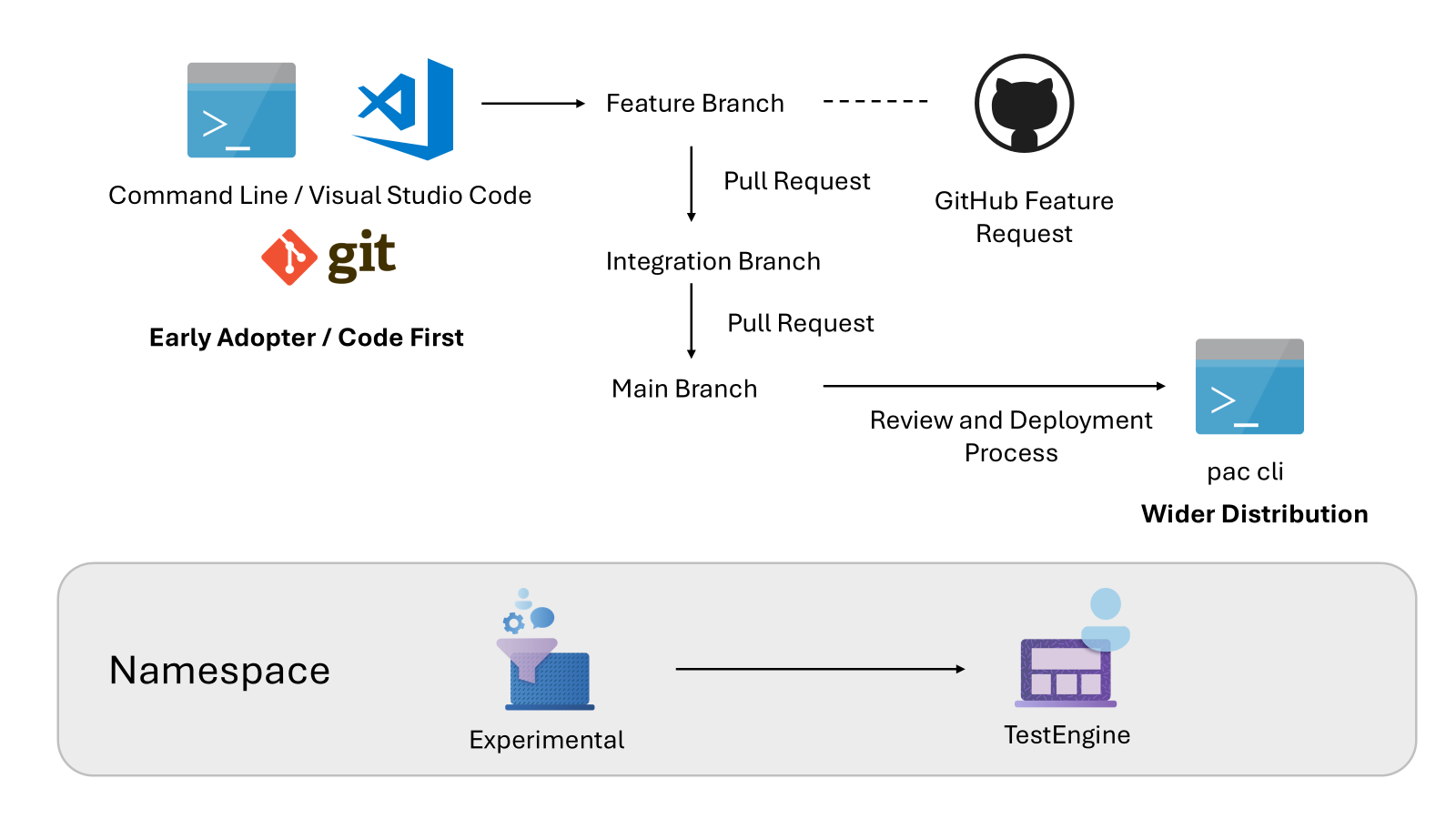Ring Deployment Model
In the ever-evolving landscape of software development, the Ring Deployment Model stands out as a strategic approach to rolling out new features and updates. This model, inspired by the concentric rings of a tree, ensures that changes are introduced in a controlled, phased manner, minimizing risks and maximizing feedback.
Imagine a bustling city where a new public transportation system is about to be launched. Instead of opening all routes simultaneously, the city planners decide to test the system in a small neighborhood first. This pilot phase allows them to gather feedback, identify issues, and make necessary adjustments before expanding to larger areas. This is the essence of the Ring Deployment Model.
Lets have a look at what that looks like for the target release process for Test Engine Features

The specific ring deployment model for Power Apps Test Engine is in development. Check back here as guidance on new features and usage patterns are determined.
The Core Rings
Inner Ring (Canary Users): At the heart of the model lies the Inner Ring, often referred to as the Canary Users. These are the early adopters who are willing to test new features first. These feature are linked to feature request in GitHub open source project. The feedback of early adopters feedback is crucial as it helps identify critical bugs and usability issues that might have been overlooked during development. This ring is typically small, consisting of internal teams or a select group of trusted users using a build from source strategy. New features in this ring are marked as Preview.
Second Ring (Beta Testers): Once the initial feedback is incorporated, the deployment expands to the Second Ring. This group is larger and includes beta testers who are more representative of the general user base. The goal here is to validate the changes in a more diverse environment, ensuring that the updates work seamlessly across different configurations and use cases. Preview features at this stage could be available in the
pac cliusing opt-in configurationOuter Ring (General Availability): Finally, after thorough testing and refinement, the deployment reaches the Outer Ring. This is the general availability phase where the new features are rolled out to all users. By this stage, the updates are expected to be stable and reliable, having been vetted through the previous rings. Features that reach this level move to TestEngine namespace for wider usage.
Development Branches and Integration
The Ring Deployment Model is closely tied to the development workflow, particularly the use of branches in version control systems. Here’s how it integrates:
- Development Branches: New features and updates are initially developed in separate branches. These branches allow developers to work on new functionalities without affecting the main codebase.
- Merge to Main Branch: After successful testing in the, the changes are tagged in the main branch for a release. This tag represents the stable version of the software that is ready for deployment.
Namespaces for Feature Testing
Within each release, features are introduced in different namespaces to facilitate testing and feedback:
- Preview Namespace: New features are first included in the Preview namespace. This allows early adopters to test and provide feedback on these features before they are widely released.
- TestEngine Namespace: After initial testing and refinement, features are promoted to the TestEngine namespace. This namespace is designed for wider usage, ensuring that the features are robust and ready for broader deployment.
Integration into Power Platform Command Line
The final step involves integrating the tested and refined features into the Power Platform Command Line. This ensures that the new functionalities are accessible to all users, enhancing their development experience.
Benefits of the Ring Deployment Model
- Risk Mitigation: By gradually expanding the user base, the model reduces the risk of widespread issues. Problems can be identified and resolved early, preventing major disruptions.
- User Feedback: Continuous feedback from different user groups ensures that the final product meets the needs and expectations of the entire user base.
- Scalability: The model is highly scalable, allowing organizations to adjust the size of each ring based on the complexity of the update and the risk tolerance.